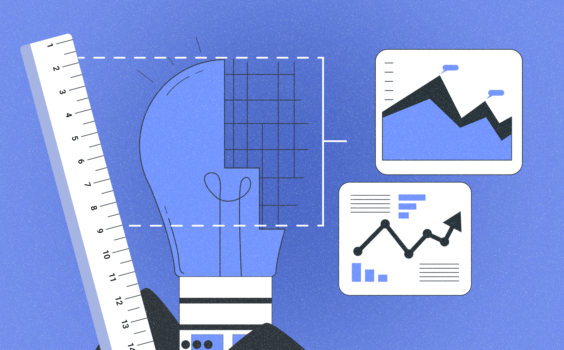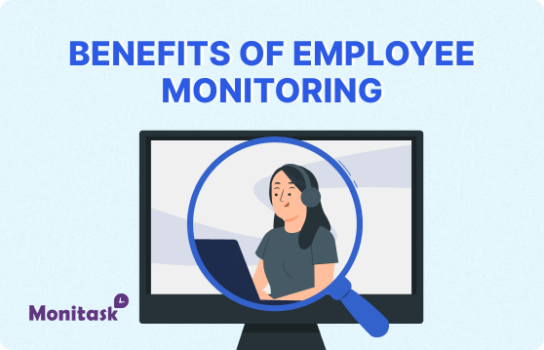What Is Task Efficiency?
Task efficiency is the measure of how effectively an individual or team completes a task with minimal waste of time, resources, and effort while maintaining high-quality output. It's crucial for organizational productivity, employee satisfaction, and overall business success. Key aspects: • Time management • Resource optimization • Quality maintenance • Cost-effectiveness • Continuous improvement
Task efficiency is a cornerstone of modern workplace productivity and a key focus area for HR professionals and managers alike. It's not just about getting things done quickly; it's about achieving optimal results with minimal resource expenditure. Let's dive deep into this concept, exploring its nuances, measurement techniques, and impact on organizational success.
Understanding Task Efficiency
At its core, task efficiency is about maximizing output while minimizing input. It's the art and science of completing tasks in the most effective manner possible, considering factors such as time, resources, quality, and cost. Efficient task completion isn't just beneficial for the bottom line; it also contributes to employee satisfaction and overall workplace harmony.
Components of Task Efficiency
To truly grasp task efficiency, we need to break it down into its constituent parts:
- Time Management: The ability to allocate and use time wisely to complete tasks.
- Resource Optimization: Making the best use of available resources, including human capital, technology, and materials.
- Quality Control: Maintaining high standards of output despite increased efficiency.
- Cost-Effectiveness: Ensuring that the cost of completing a task doesn't outweigh its benefits.
- Process Streamlining: Continuously refining workflows to eliminate unnecessary steps or bottlenecks.
Measuring Task Efficiency
Quantifying task efficiency is crucial for improvement. Here are some common metrics used:
| Metric | Description | Formula |
| Time to Completion | How long it takes to finish a task | End Time – Start Time |
| Output per Hour | Amount produced in a given timeframe | Total Output / Hours Worked |
| Error Rate | Frequency of mistakes in task completion | (Number of Errors / Total Output) x 100 |
| Resource Utilization | How effectively resources are used | (Resources Used / Total Available Resources) x 100 |
| Cost per Unit | Expense associated with producing one unit | Total Cost / Number of Units Produced |
It's worth noting that these metrics should be used in combination to get a holistic view of task efficiency. Focusing on a single metric can lead to skewed perceptions and potentially counterproductive behaviors.
Factors Influencing Task Efficiency
Several factors can impact how efficiently tasks are completed:
- Skill Level: The expertise and experience of the person or team performing the task.
- Tools and Technology: The quality and appropriateness of the tools available.
- Work Environment: Physical and psychological conditions of the workspace.
- Task Complexity: The intricacy and difficulty level of the task at hand.
- Motivation: The drive and enthusiasm of the individuals involved.
- Organizational Culture: The overall attitude towards efficiency within the company.
Understanding these factors can help managers and HR professionals create environments conducive to high task efficiency.
Strategies for Improving Task Efficiency
Enhancing task efficiency is an ongoing process. Here are some strategies that organizations can implement:
- Training and Development: Invest in upskilling employees to perform tasks more effectively.
- Process Automation: Utilize technology to automate repetitive or time-consuming tasks.
- Clear Communication: Ensure that task requirements and expectations are clearly conveyed.
- Regular Feedback: Provide timely and constructive feedback to help employees improve.
- Workload Management: Balance tasks among team members to prevent burnout and maintain efficiency.
- Ergonomic Workspace Design: Create a comfortable and conducive work environment.
Case Study: Task Efficiency in Action A medium-sized marketing agency implemented a task efficiency improvement program in 2023. By focusing on process streamlining and employee training, they achieved the following results: • 25% reduction in project completion time • 15% increase in client satisfaction scores • £350,000 (approximately $443,000 USD) annual cost savings • 30% decrease in employee overtime hours This case demonstrates the tangible benefits of prioritizing task efficiency in the workplace.
The Role of Technology in Task Efficiency
In today's digital age, technology plays a crucial role in enhancing task efficiency. From project management software to AI-powered analytics tools, technological solutions can significantly streamline workflows and boost productivity.
According to a recent study by McKinsey Global Institute, automation technologies could raise productivity growth globally by 0.8 to 1.4 percent annually. This underscores the potential of technology in driving task efficiency.
Here's a comparison of how different technologies can impact task efficiency:
| Technology | Potential Impact on Task Efficiency | Challenges |
| AI and Machine Learning | High – Can automate complex tasks and provide predictive insights | Initial cost, data privacy concerns |
| Project Management Software | Medium to High – Improves coordination and resource allocation | Learning curve, integration with existing systems |
| Cloud Computing | Medium – Enhances collaboration and data accessibility | Security risks, dependence on internet connectivity |
| Internet of Things (IoT) | Medium – Provides real-time data for better decision-making | Implementation complexity, data overload |
| Virtual Reality (VR) | Low to Medium – Can improve training efficiency | High initial cost, limited practical applications |
The Human Factor in Task Efficiency
While technology and processes are important, the human element remains central to task efficiency. Factors such as motivation, job satisfaction, and work-life balance significantly impact how efficiently employees perform their tasks.
"The most efficient way to produce anything is to bring together under one management as many as possible of the activities needed to turn out the product." – Peter F. Drucker
This quote highlights the importance of effective management in fostering task efficiency. Leaders play a crucial role in creating an environment where employees can thrive and perform at their best.
The Impact of Workplace Culture on Task Efficiency
A positive workplace culture can significantly boost task efficiency. Elements of a culture that promotes efficiency include:
- Open Communication: Encouraging the free flow of ideas and feedback.
- Continuous Learning: Fostering an environment where employees are encouraged to develop new skills.
- Recognition and Rewards: Acknowledging and incentivizing efficient task completion.
- Work-Life Balance: Promoting a healthy balance to prevent burnout and maintain long-term efficiency.
- Autonomy: Giving employees the freedom to manage their tasks in ways that work best for them.
Task Efficiency and Employee Well-being
It's crucial to note that pushing for extreme task efficiency without considering employee well-being can be counterproductive. Burnout, stress, and job dissatisfaction can result from overly aggressive efficiency drives.
A study published in the Journal of Occupational Health Psychology found that employees who felt pressured to work faster and more efficiently without adequate support experienced higher levels of stress and lower job satisfaction. This ultimately led to decreased overall productivity.
Balancing Efficiency and Well-being • Encourage regular breaks • Promote mindfulness and stress-management techniques • Provide resources for mental health support • Set realistic deadlines and workload expectations • Foster a culture of work-life balance
Global Perspectives on Task Efficiency
Task efficiency is viewed and approached differently across cultures. For instance, the Japanese concept of "Kaizen" (continuous improvement) has significantly influenced global perspectives on efficiency.
Here's a brief overview of how different regions approach task efficiency:
| Region | Approach to Task Efficiency | Notable Practices |
| Japan | Continuous improvement, collective responsibility | Kaizen, 5S methodology |
| United States | Technology-driven, results-oriented | Agile methodologies, OKRs (Objectives and Key Results) |
| Germany | Precision-focused, process-oriented | Strict time management, detailed planning |
| Scandinavian Countries | Work-life balance, trust-based | Flexible working hours, flat organizational structures |
| China | Speed-oriented, adaptable | Rapid prototyping, '996' work culture (9am-9pm, 6 days a week) |
Understanding these cultural differences is crucial for multinational organizations aiming to implement global task efficiency strategies.
Future Trends in Task Efficiency
As we look towards the future, several trends are likely to shape the landscape of task efficiency:
- AI-Driven Personalization: AI will increasingly be used to tailor tasks and workflows to individual employee strengths and preferences.
- Remote Work Optimization: With the rise of remote and hybrid work models, new tools and strategies for maintaining efficiency in distributed teams will emerge.
- Biometric Feedback: Wearable technology may be used to monitor employee stress levels and suggest breaks or task switches to maintain optimal efficiency.
- Gamification: Incorporating game-like elements into task completion to boost engagement and efficiency.
- Blockchain for Workflow Management: Blockchain technology could be used to create more transparent and efficient workflow systems.
According to a report by Grand View Research, the global workforce management market size is expected to reach $27.5 billion (approximately £21.7 billion GBP) by 2028, growing at a CAGR of 9.2% from 2021 to 2028. This growth is largely driven by the increasing focus on task efficiency and productivity optimization.
Conclusion
Task efficiency is a multifaceted concept that goes beyond simple speed or output metrics. It encompasses a delicate balance of productivity, quality, resource utilization, and employee well-being. As organizations continue to navigate the complexities of the modern workplace, prioritizing and optimizing task efficiency will remain a key factor in achieving sustainable success.
By leveraging technology, fostering a supportive culture, and maintaining a global perspective, businesses can create environments where tasks are completed not just quickly, but effectively and sustainably. The future of work will likely see even more innovative approaches to task efficiency, driven by advancements in AI, data analytics, and our evolving understanding of human productivity.
Ultimately, the goal of task efficiency isn't just to do more in less time, but to create value more effectively, allowing both organizations and individuals to thrive in an increasingly competitive global landscape.
Key Takeaways: 1. Task efficiency is about optimizing output while minimizing resource input. 2. Measurement should include multiple metrics for a holistic view. 3. Technology plays a crucial role, but the human element remains central. 4. Cultural differences significantly impact approaches to task efficiency. 5. Future trends point towards personalization and AI-driven optimization. 6. Balancing efficiency with employee well-being is crucial for sustainable productivity.
As we continue to explore and refine our approaches to task efficiency, it's clear that this will remain a critical area of focus for HR professionals, managers, and organizational leaders in the years to come.


